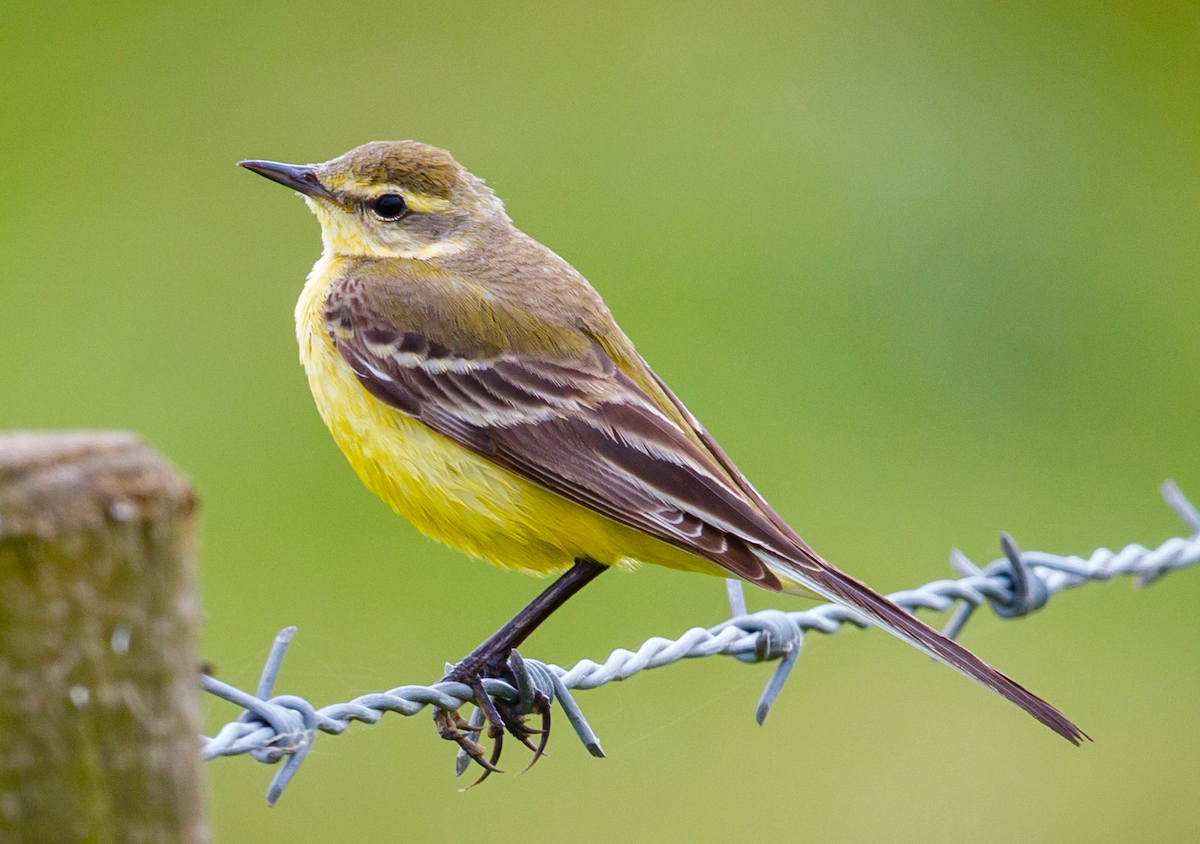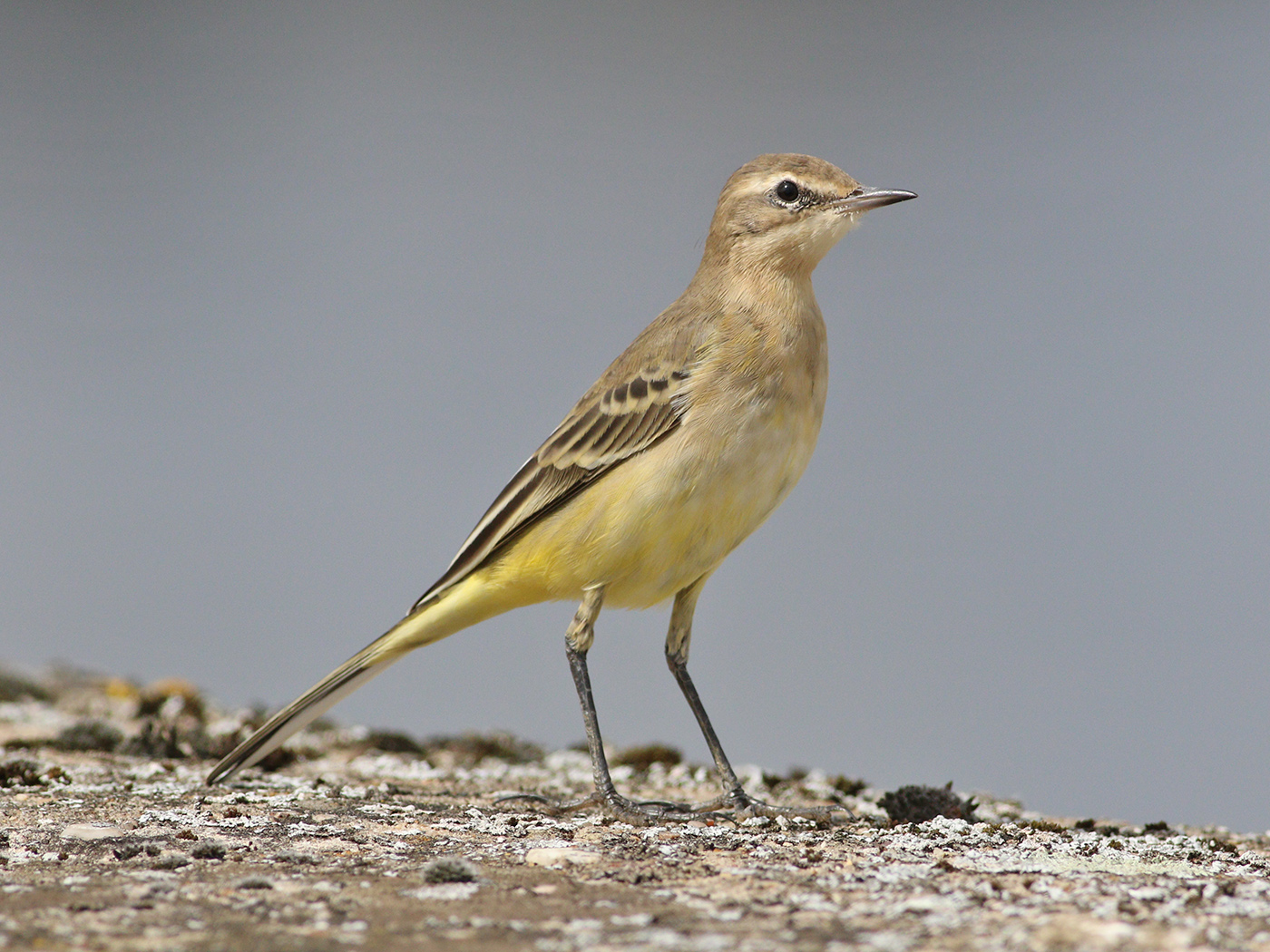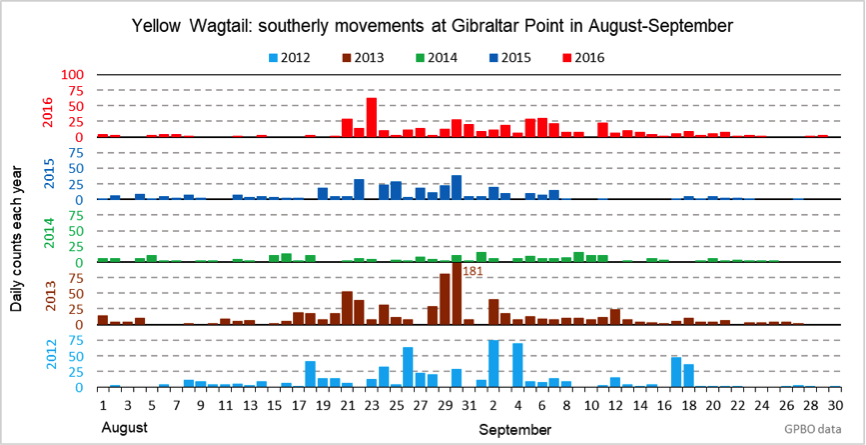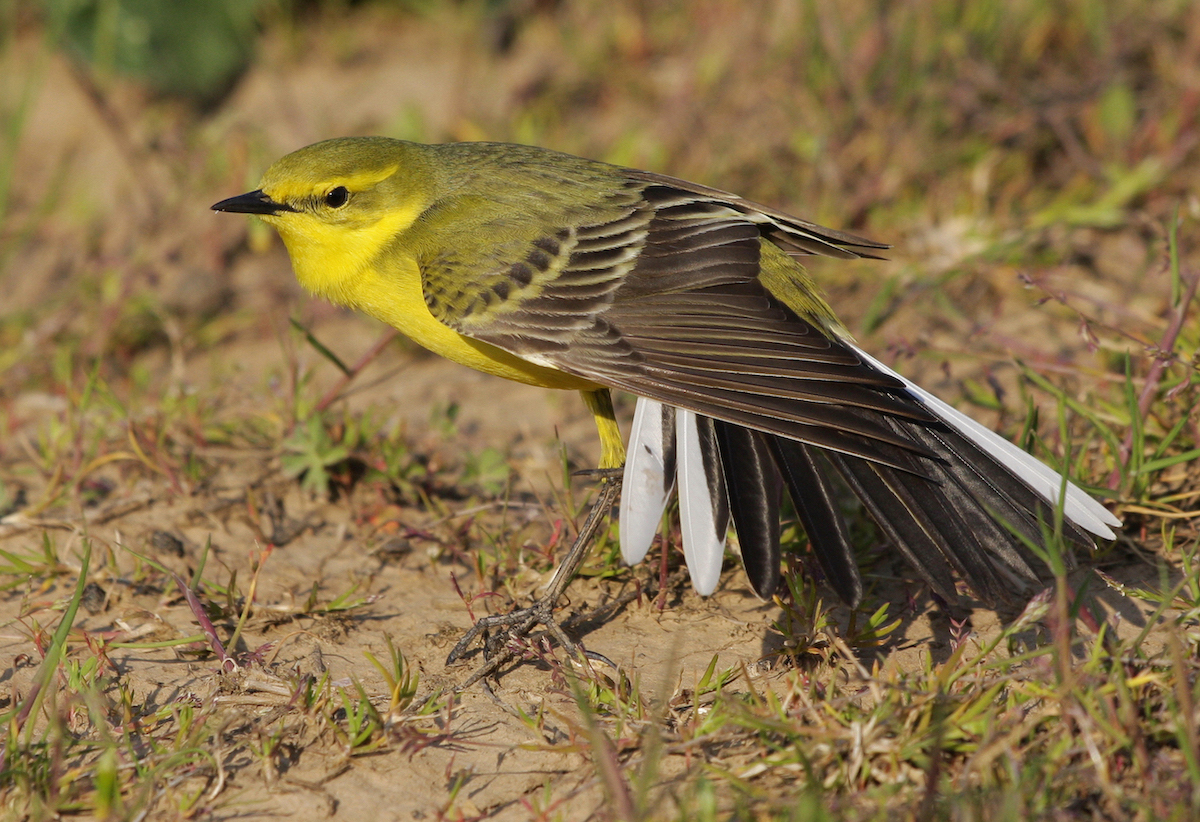Western Yellow Wagtail Motacilla flava flavissima
Summer visitor and passage migrant. British race flavissima common. Other races listed on subsequent are scarce/vagrants.


Yellow Wagtails: left, Frampton Marsh May 4th 2010 (Neil Smith); centre, Saltfleetby May 16th 2016 (John Clarkson);
right, Cadney Reservoir August 15th 2016 (Russell Hayes)
The British sub-species of Yellow wagtail, Motacilla flava flavissima, is a common summer visitor and passage migrant. However, there has been a marked south-eastwards contraction since the first BTO Breeding Atlas 1968-72 was published and a 72% population decline during 1970-2010. By the late 1980s its was scarcer than Pied Wagtail, Motacilla alba yarrellii when the Atlas estimated a population of 2,700 pairs compared to 4,000 for Pied. Since then as reported in the last three BoCC reviews it's UK conservation status has gone from green to amber to red in the space of 20 years. Substantial scientific evidence indicates that agricultural intensification is the main factor driving the population declines of a wide range of farmland breeding species that share the habitat and dietary requirements of Yellow Wagtails (Kirby, Anderson et al 2012). The latter study looked at two broad areas of the East Midlands, one of which was nominally centred on Gainsborough in north Lincolnshire. Yellow Wagtails successfully raised two broods mainly in winter cereals, second broods being more successful, productivity which compared favourably with that in another study where there was a switch to potato crops for second broods. Based on BBS data Lincs holds around 20% of the British population, which is effectively the world population of our endemic flavissima race. Perhaps our most important bird of conservation concern?
Early spring migrants have been recorded in late March but the main passage is from mid-April to early June with peak numbers occurring between late April and mid-May. In autumn the return migration peaks in the last two weeks of August. The charts below show daily counts of Yellow Wagtails moving south at Gibraltar Point in the four autumns 2012-2016, where coverage has been fairly consistent over the period. This showed that the period of movement has been similar in each of these years, but there has been considerable difference in volume between years. During the two months when the majority of autumn movement occurs, totals have ranged from a maximum of 784 in 2013 to a minimum of 234 in 2014.

(Updated with reference to the new Birds of Lincolnshire (2021) December 2022)

